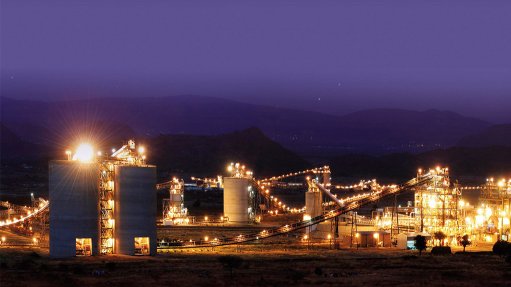
Name: Marula mine.
Location: The Marula mine is located on the eastern limb of the Bushveld Complex, in South Africa’s Limpopo province, about 35 km north-west of Burgersfort.
Controlling Company: Impala Platinum (Implats) owns 73% of the Marula mine with the balance being owned by black economic-empowerment interests.
Brief History: Platinum was first discovered in the Marula mine area by renowned explorer Hans Merensky on the nearby farm Maandagshoek (now Modikwa Platinum) in the 1920s. Implats entered into an arrangement to acquire the Winnaarshoek property from Platexco, a Canadian-based company, in June 1998. The mineral rights to portions of the adjacent farms of Clapham and Forest Hill and a sublease to Driekop were subsequently acquired from Anglo Platinum in exchange for Hendriksplaats (part of Modikwa Platinum), thereby consolidating the Marula mine area.
The exploration programme was expanded and about 750 surface boreholes were drilled. The establishment and development of the mine, requiring considerable investment from Implats in infrastructure and environmental protection measures, started in October 2002.
Brief Description: The Marula operation, which mines the upper group two (UG2) reef, comprises two decline shaft systems and a concentrator plant.
Geology/Mineralisation: The Merensky reef and the underlying UG2 reef are present and suboutcrop in the Marula mining right area. The reefs dip generally in a west-south-west direction at 12 ° to 14 °, with a vertical separation of about 400 m between them. Besides one prominent dyke and a dunite pipe, there is minimal faulting on the property.
Reserves: Total proven and probable reserves as at June 30, 2014, were estimated at 25.1-million tonnes grading 4.14 g/t platinum, palladium, rhodium and gold (4E) and 4.8 g/t platinum, palladium, rhodium, iridium, ruthenium and gold (6E).
Resources: Total mineral resources as at June 30, 2014, were estimated at 100.4-million tonnes grading 6.45 g/t 4E and 7.3 g/t 6E.
Products: 4E and 6E.
Mining Method: Current mining activities target the UG2 reef only, which is accessed using two decline shaft systems. The Driekop shaft uses a hybrid mining method, while the Clapham shaft uses hybrid and conventional mining methods. In the hybrid sections, all the main development is done on reef and stoping is conducted through conventional single-sided breast mining from a centre gully.
For the conventional operation, the footwall drives are developed on strike about 25 m below the reef horizon, with crosscut breakaways of about 220 m apart.
Major Infrastructure and Equipment: Development is undertaken with drill rigs and dump trucks. The stope face is drilled using hand-held pneumatic rock drills with air legs.
Initial processing is conducted at Marula’s concentrator plant. Concentrate is then transported by road to Implats’ Mineral Processes, in Rustenburg, in accordance with a life-of-mine offtake agreement with Impala Refining Services.
Prospects: The optimisation of Marula’s existing infrastructure over the past few years has provided a solid foundation to reach 86 000 oz/y of platinum in 2015. In the medium- to long-term, the development of Clapham level 5 and securing access to the UG2 reef within the Modikwa joint venture are necessary to increase this level of output to 90 000 oz/y of platinum.
Contact Person: Group corporate relations manager Alice Lourens.
Contact Details:
Implats,
tel +27 11 731 9000,
fax: +27 11 731 9254,
email Alice.Lourens@implats.co.za, and
website http://www.implats.co.za.